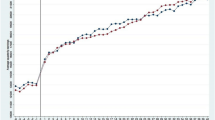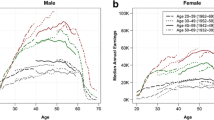Abstract
In the wake of new federal and state mandates,community colleges are faced with demands to provideaccountability reports on student outcomes. With the useof the Employment Development Department Unemployment Insurance (EDD-UI) wage record data, along withthe California Community Colleges Chancellor's OfficeManagement Information System administrative database,this study sought to investigate the extent to which completing an associate degree andvocational certificate impacts the postcollege earningsof students. Based on information from 700,564 studentsfrom California community colleges during the 1992-93 academic year, the findings suggest thatstudents' gains from first year out of college to thirdyear out will differ by age group. Among economicallydisadvantaged students, a strong positive relationship exists between educational attainment andpostcollege gains. An important finding among vocationalstudents is that as women complete more education, theearnings gap closes between men and women. Finally, this study raises several policy implicationsand presents suggestions for future research.
Similar content being viewed by others
REFERENCES
M. Abramowitz and I. A. Stegun, Pocketbook of Mathematical Functions. Verlag Harri Deutsch, Thun Frankfurt/Main, 1984.
R. E. Black, M. M. Levine, M. L. Clements, T. P. Hughes, and M. J. Blaser, ''Experimental Campylobacter jejuni Infection in humans,''Journal of Infectious Diseases 157(3), 472–479 (1988).
H. L. DuPont, C. L. Chappell, C. R. Sterling, P. C. Okhuysen, J. B. Rose, and W. Jakubowski, ''The Infectivity of Cryptosporidium parvum in Healthy Volunteers,'' TheNew England Journal of Medicine 332(13), 855–859 (1995).
B. B. Finlay and S. Falkow, ''Common Themes in Microbial Pathogenicity,'' Microbiological Reviews 53(2), 210–230 (1989).
W. A. Furumoto and R. Mickey, ''A Mathematical Model for the Infectivity-Dilution Curve of Tobacco Mosaic Virus: Theoretical Considerations,'' Virology 32, 216–223 (1967).
C. N. Haas, ''Estimation of Risk Due to Low Doses of Microorganisms: A Comparison of Alternative Methodologies,'' American Journal of Epidemiology 118(4), 573–582 (1983).
C. N. Haas, C. S. Crockett, J. B. Rose, C. P. Gerba, and A. M. Fazil, ''Infectivity of Cryptosporidium parvum Oocysts, Journal of the American Water Works Association 88(9), 131–136 (1996).
C. N. Haas, J. B. Rose, C. Gerba, and S. Regli, ''Risk Assessment of Virus in Drinking Water, Risk Analysis 13(5), 545–552 (1993).
A. M. M. Hoogenboom-Verdegaal, Infectieziekten van het maag-darmkanaal, In D. Ruwaard and P. G. N. Kramers, editors, Volksgezondheid Toekomst Verkenning, chapter IIB 12, pages 217–220. Sdu Uitgeveriji, Den Haag, 1993.
R. A. C. Hughes and J. H. Rees, ''Guillain-Barre´ Syndrome,'' Current Opinion in Neurology 7, 386–392 (1994).
J. M. Last, A Dictionary of Epidemiology. Oxford University Press, New York, 3rd edition (1995).
H. M. Marks, M. E. Coleman, C. T. J. Lin, and T. Roberts, ''Topics in Microbial Risk Assessment: Dynamic Flow Tree Process,'' Risk Analysis 18(3), June 1998.
P. McCullagh and J. A. Nelder, Generalized Linear Models, Volume 37 of Monographs on Statistics and Applied Probability. Chapman and Hall, London, 1989.
N. B. McCullough and C. Wesley Eisele, ''Experimental Human Salmonellosis. I. Pathogenicity of Strains of Salmonella meleagridis and Salmonella anatum Obtained from Spray-Dried Whole Egg,'' Journal of Infectious Diseases 88, 278–289 (1951).
G. J. Medema, P. F. M. Teunis, A. H. Havelaar, and C. N. Haas, ''Assessment of the Dose-Response Relationship of Campylobacter jenuni,'' International Journal of Food Microbiology 30, 101–111 (1996).
I. J. M. Sengers, Y. M. Ouwerkerk, and S. Terpstra, Hygie¨ne en infectiepreventie. De Tijdstroom, Lochem, 1991.
P. Teunis, A. Havelaar, J. Vliegenthart, and G. Roessink, ''Risk Assessment of Campylobacter Species in Shellfish: Identifying the Unknown,'' Water Science and Technology 35(11– 12), 29–34 (1997).
P. F. M. Teunis, Infectious Gastroenteritis-Opportunities for Dose Response Modeling, Technical Report 284 550 003, RIVM, Bilthoven, November 1997.
P. F. M. Teunis, A. H. Havelaar, and G. J. Medema, A Literature Survey on the Assessment of Microbiological Risk for Drinking Water. Technical report, National Institute of Public Health and the Environment, 1994. RIVM report nr. 734301006.
P. F. M. Teunis, G. J. Medema, L. Kruidenier, and A. H. Havelaar, ''Assessment of the Risk of Infection by Cryptosporidium or Giardia in Drinking Water from a Surface Water Source,'' Water Research 31(6), 1333–1346 (1997).
P. F. M. Teunis, O. G. van der Heijden, J. W. B. van der Giessen, and A. H. Havelaar, The Dose Response Relation in HumanVolunteers for Gastro-Intestinal Pathogens. Technical Report 284550002, Rijksinstituut voor Volksgezondheid en Milieu RIVM, 1996.
M. E. Turner, Jr., ''Some Classes of Hit-Theory Models,'' Mathematical Biosciences 23, 219–235 (1975).
Rights and permissions
About this article
Cite this article
Sanchez, J.R., Laanan, F.S. & Wiseley, W.C. POSTCOLLEGE EARNINGS OF FORMER STUDENTS OF CALIFORNIA COMMUNITY COLLEGES: Methods, Analysis, and Implications. Research in Higher Education 40, 87–113 (1999). https://doi.org/10.1023/A:1018726428306
Issue Date:
DOI: https://doi.org/10.1023/A:1018726428306




